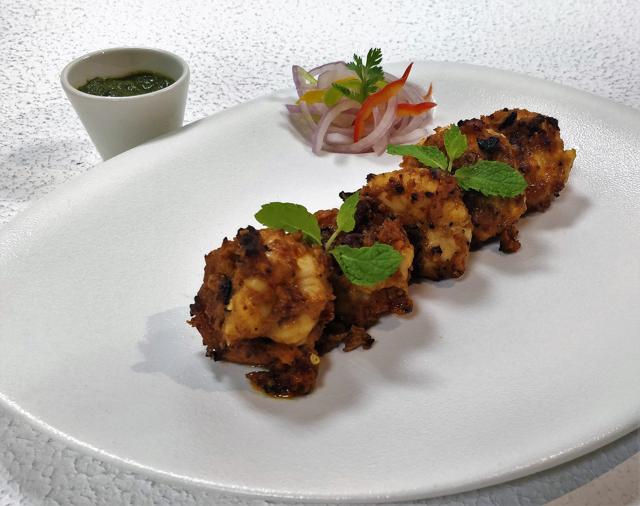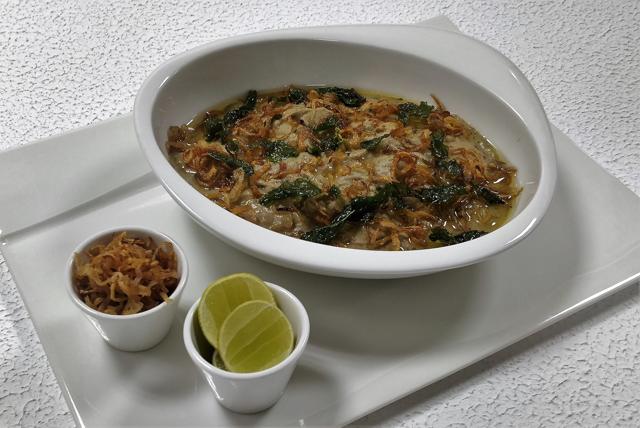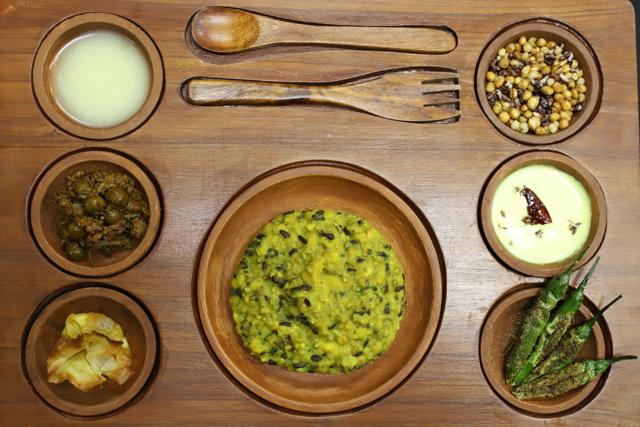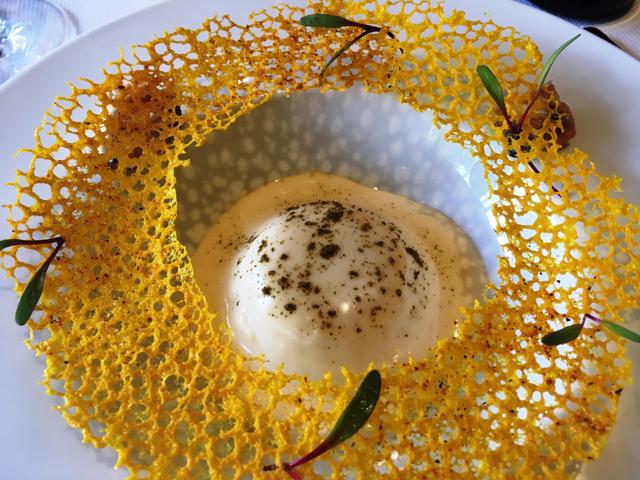Whenever a new property is being planned, the bosses at the big hotel companies sit down to decide on the restaurants. For the most part, this is easy enough: an all-day dining option of some kind, an Oriental restaurant (either Chinese or a place that serves sushi rolls) and perhaps an Italian-style pizza-pasta place.
But, at most companies, the discussion only gets difficult when it comes to the Indian restaurant. Will it be North Indian or South Indian? Will it be designed with foreigners in mind? Will it aim for local clientelle as well? Will the food be presented modern-style or will it be traditional? And so on.
Since the 1970s, hotel companies have struggled with the kind of Indian restaurants they want to build.

Till then, however, it was easy enough. India had no great restaurant tradition dating back decades. Most Indian restaurants were created after 1947 and served some variation of Punjabi-restaurant cuisine (i.e. food that no Punjabi would eat at home) though often it was called ‘Mughlai’ to make it seem more glamorous.
The Oberois were the only hotel chain to bother with Indian food till the Seventies and they stuck to Punjabi-restaurant food at their Mughal Rooms. The Taj never quite got it right when it entered the fray in the early 1970s either. Tanjore, which opened in 1972, was the group’s first proper Indian restaurant but the cuisine had no real character.
The change began in 1978 in Delhi. The new Taj had the stunning Haveli restaurant which was based on recipes that the Taj’s chefs had gathered on their travels around the country. Though the hotel’s Chef (Arvind Saraswat) was a Punjabi, his background was in European cuisine and he approached the food with fresh eyes.
Many of the dishes from Haveli soon become menu standards at restaurants all over India including, most famously, achaar ghosht. Haveli set the tone for what would become the Taj’s style for the next two decades; its Indian restaurants would showcase regional cuisines and would be based on recipes from home cooks.
At the Maurya, which opened at roughly the same time, they took the opposite approach. The hotel focused on North Indian food of the kind most people did not eat at home. Mayur, its flagship restaurant, was entrusted to Imtiaz Qureshi, a wedding caterer from Lucknow who specialised in banquet food. Bukhara, its kabab restaurant, took inspiration from Moti Mahal, refining many of that iconic restaurant’s creations. A decade later, ITC decided to give Imtiaz a huge public profile. It closed down Mayur and created Dum Pukht around his personality.

The restaurants were such great successes that ITC developed a formidable reputation for Indian food. The group’s formula for North Indian food has not changed. Nearly every ITC luxury hotel will have some variation of Bukhara (usually called Peshawari) and a Dum Pukht clone of some description. Because ITC is obsessed with consistency (for instance, Dal Bukhara is made with Bisleri water at every ITC restaurant so that variations in the taste of local water do not affect its flavours), the Indian food is always good. It is the one chain where there isn’t too much of a struggle when it comes of planning new Indian restaurants.
The Taj took the home-recipe formula forward when it opened all over South India. Rain Tree at the Connemara served Chettinad food of the sort you only found at homes and Karavali at Bangalore’s Gateway was built around recipes that Taj chefs had persuaded housewives along India’s south-west coast to part with.
Eventually, ITC and Taj began learning from each other. In the 1990s, ITC opened the first Dakshin, focussing on the food of the four Southern states based on --- you guessed it — home recipes. The Taj retaliated in 1996 by opening Southern Spice, a clear Dakshin rip-off (though the food was better) at the Taj Coromandel in Chennai. The battle also extended to North Indian food. The Taj stole a manager and two chefs from ITC to open Sonargaon at Calcutta’s Taj Bengal, junking the original plan to build the restaurant around Bengali home recipes. (Eventually, the chefs went back to ITC.)
Through all of this, the Oberois seemed lost. When the Mughal Rooms began to seem dated, they replaced them with new places called Kandahar which ripped off ITC’s menus. They never found much public esteem and eventually, the group scrapped the Kandahar brand.
In the 21st Century, every chain has tried to create new Indian food options. When he was the Taj group’s top chef, Hemant Oberoi stuck with the company’s tradition of never-seen-on-a-restaurant-menu-before dishes when he opened Masala Art in Delhi and Masala Kraft in Mumbai. Much of the menu came from the chef’s own memories of dishes that his mother made for his father and of the dhabha dishes of Amritsar and Lahore that never quite made it to Kwality-Mughal Room menus.
Later, the hotels realised that many of their foreign guests had eaten Indian food abroad, often in London, and tried to create restaurants that recreated that experience. The Taj’s Varq (which replaced Haveli) was clearly influenced by the London restaurants even though the food was much better than the stuff the London places served. (When the Taj did take the Varq menu to London, at the Bombay Brasserie, it found no favour with Brits who didn’t like the authentic Indian flavours!)
Over the last decade, hotels have tried to create modern Indian restaurants. The Mumbai Oberoi hired back Vineet Bhatia, who had left Kandahar to find fame and Michelin stars in London, to open Ziya. This year, Alfred Prasad, who won a Michelin star at London’s Tamarind designed the menu for Omya at the Delhi Oberoi. Amaranta at the Gurgaon Oberoi, started out as a modern Indian seafood restaurant and then lost its way in a comical attempt to be the Indian Accent of Haryana. (I am told the food has improved but I have not been back for ages.)
At ITC, various experiments with modern Indian food (Indian Mosaic etc.) have finally yielded one outstanding restaurant. The modern South Indian restaurant Avartana in Chennai is, for my money, the single best new restaurant that the company has opened in the last five years. Because the media are Mumbai and Delhi focussed and because ITC has so many famous Indian restaurants anyway. Avartana never gets the recognition it deserves.

At the Taj, the last great opening was Mumbai’s Konkan Cafe based on (here we go again!) family recipes from the Konkan speaking regions. The recipes were, of course, terrific, but it was the genius of the Chef, Ananda Solomon, that ensured that the food was outstanding.
Otherwise, it has been a decade since the Taj has opened a significant Indian restaurant (actually, make that any restaurant) at its many hotels. The early advantages have been largely thrown away and at a time when the Oberois and ITC are trying new things, the Taj has seemed sadly bereft of new ideas.
So I am happy to report that last week I had the single best Indian meal I have had this year at a Taj hotel. That brilliant dinner showcased the strengths and weakness of today’s Taj group. The strength is that when the Taj gets its act together, it is still the Taj of old; India’s greatest hotel chain. The weakness is that there is no consistency. The company’s glories come from the flair and efforts of individuals: in this case, Satyajeet Krishnan, the General Manager of Taj Mansingh and Arun Sundararaj, the greatest chef (by a long, long way) in today’s Taj group.
Chef Arun has redone the menu of Varq, playing with style and form to create new dishes that show off the traditional flavours of India.

We started with a Chicken Tikka soufflé (I know! But believe me: it works!) and went through a dazzling array of dishes including a Kerala-style duck roast served with confit and quinoa on the side (I would be happy to just eat the confit and quinoa as a main course), a khichda made with unusual grains, and for dessert, sugar free phirni made with quinoa followed by Kulfi lollipops. Somewhere, along the way, as all this modern food was being served, Arun threw in a safediya biryani that was so flavourful that I had to scour my memory to recall when I had eaten a better safed biryani. (It was a decade ago and Imtiaz was cooking.)
Varq does not get the recognition it deserves. But it is in the same league as Indian Accent. Arun is an Executive Chef who is always pushing his juniors forward so he remains a low key figure. But I reckon that, as a chef, he is up there with Srijit Gopinath and Sriram Aylur, the Taj’s two greatest chefs.
For as long as I can remember the Taj has been my favourite hotel chain. (It may have something to do with growing up in Mumbai.) I believe that, in almost every area of cuisine, the Taj has influenced the way Indians eat far more than any other hotel group. So it’s been sad watching once great Taj hotels -- like the Mumbai flagship --- slip into operational black holes and sadder still to see the Taj lose its magic touch when it comes to food.
But Varq reminds us that any hotel chain is still capable of excellence if individuals in leadership positions are talented and dedicated. In some ways, that is one way out of the crisis that all hotels now face when it comes to Indian food: Hire the best chefs and empower them. Rely on quality and not on hype.
And people will queue up to eat your food.



